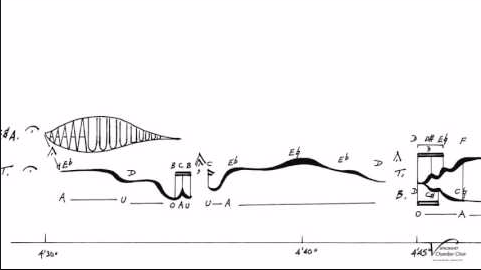The opening moments of Once on a Windy Night, as composed and written by R. Murray Schafer
R. Murray Schafer is a foundational figure in environmental music composition and in the scientific discipline of acoustic ecology. In this particular choral piece, performed by the Vancouver Chamber Choir, Schafer gives a striking representation of wind. Bernie Krause, another influential composer and acoustic ecologist, writes, “Once on a Windy Night demonstrates how critical listening can inspire us to incorporate even the most intricate soundscape details, just as Schafer has gracefully captured the essence of this invisible phenomenon with such stunning impact” (Krause 2015: 89-90). The composition is certainly stunning, moving quickly between moments of calm quiet and gusts of whirling melismatic walls of sound. Krause proposes that wind is “arguably one of the most difficult aspects of the soundscape to convey through musical art” (ibid.), and Schafer’s creative notation (sampled in the image to the left and visible in the video link below) demonstrate the complexities inherent in this representational practice. This piece has a profound metaphorical-to-literal transformative character: the human singers literally use and create wind in the act of singing, and as such they create windiness, rather than just representing it metaphorically or abstractly. In this way, the performance of this composition transgresses the boundaries between environment and self, between the elemental (wind) and the biological (human).


